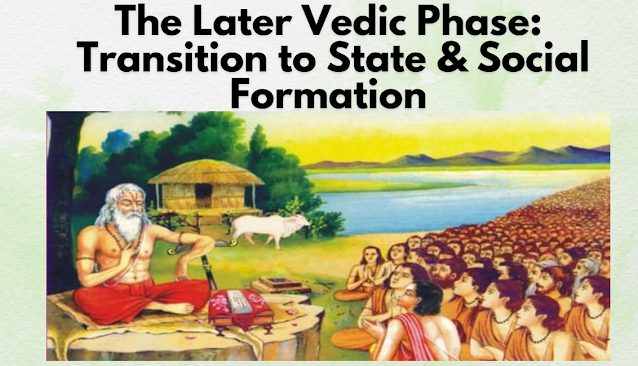The Later Vedic Age witnessed the expansion of Aryan settlements from the Punjab region to the Gangetic plains. The period is mainly documented in texts like the Sama Veda, Yajur Veda, and Atharva Veda, along with Brahmanas, Aranyakas, and Upanishads.
Key Features of the Later Vedic Period
Political Developments
Shift from tribal councils (Sabha & Samiti) to monarchical rule.
Kings performed elaborate rituals like Ashvamedha Yajna and Rajasuya Yajna to legitimize their authority
Emergence of large kingdoms (Mahajanapadas).
Social Structure
The Varna system became rigid, solidifying Brahmins, Kshatriyas, Vaishyas, and Shudras.
Gotra system emerged, strengthening family lineages.
Women’s status declined; they were excluded from religious rituals.
Economic Changes
Agriculture became the primary occupation.
Use of iron tools (Krishna Ayas) led to increased productivity.
Trade and commerce flourished with the use of Nishka and Satamana coins.
Religious and Philosophical Developments
Ritualistic worship became elaborate, dominated by priests (Brahmins).
Emergence of Upanishadic philosophy emphasizing Karma, Moksha, and Atman.
Worship of Vishnu and Shiva gained prominence.


.png)